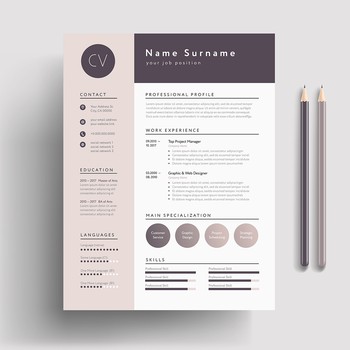How To Make Your CV Better & Stand Out
Your CV is your answer in just a few hundred words to a pretty big question: why should we hire you? Getting this right is an art and turning the lens on yourself can be difficult – too arrogant you’re unlikable; too humble you don’t get noticed. To ensure you’re making the most of any upcoming job opportunities, we’re bringing you the essential top tips which will help make your CV stand out from the crowd.
LAYOUT
Signpost and personalise
Your CV should be no more than two pages – unless the specific application requires it to be so. These pages should be clear and easy to navigate, so signpost your content. Make subheadings clear and bold and use bullet points so they can filter through information easily.
Each section should be concise and provide valuable insight into why you’re right for the job. Do read the role requirements and the company’s website to tailor your CV to the role you’re applying for; refer back to the job description throughout, in the same way as if you were answering an essay question.
In terms of sections and ordering your content, here’s a basic template to follow:
- Name and contact details
- Personal statement
- Experience (including key skills)
- Education
- Instructions regarding references
Design
Don’t overdo the design front. Avoid lots of colour and fussy or fancy fonts; just highlight your name in a different colour to draw the eye initially and use a basic, clear font like Arial or Tahoma. You also shouldn’t go too crazy with the bold, italic and underlining action; rather than helping you stand out, it can make the pages look overly busy.
Neat and tidy
Attention to detail is key. You can spend hours perfecting the content, but if your font size/colour and spacing is inconsistent, you’ll look lazy. Presentation is important. With a stack of CVs to sift through, they’ll be looking for easy ways to discount candidates – don’t let a silly mistake like poor spelling cost you your dream job. You should also save the document as a PDF to help make your CV look tidy and professional.
No photos
This is an easy one; don’t attach photos. This will only give them a way of judging you before you even get there. It shouldn’t matter what you look like as it’s not what qualifies you for the job.
CONTENTS
Who are you?
Give them the bones of who you are in the first glance. Your name should be prominent, front and centre. Your contact details – an email and phone number – should also be clear and located at the top of the page. The last thing you should do is to make it hard for your prospective employer to find out how to contact you; hand them all of the tools to enable the next step of the process – arranging an interview. One thing to leave off this first section is your age – it’s doesn’t help in explaining who you are and opens you up to age discrimination off the bat.
Experience
You may be wondering why we advise to include experience before education. Even though this might not make sense chronologically, your experience is probably more relevant to the job you’re applying for (unless specific academic grades are required for the role). Feed them the most valuable information first.
Walk the walk
As mentioned, your CV should be experience-led. But in addition to outlining your responsibilities, tell them how you have delivered results. Going above and beyond and providing insight is a desirable skill in any job – this is a good way to demonstrate you understand that.
Keywords
Lots of employers use a search tool to look for keywords they value, so look carefully at the job description and make sure any standout qualities/terms they’ve bothered mentioning are weaved into your CV copy. This will show you’re engaged and responsive.
References
References are a third party endorsement, so it’s important to ensure they’re well prepared. This is why you should end you CV with ‘References available on request’; if the employer is seriously considering your application, they’ll be happy to ask for them and it gives you time to ensure your chosen contacts are lined up properly.
THE ADD ON
Cover letter
A cover letter/email is always worth including. It’s another way to show your application isn’t just a replica of a standard CV. Keep it short and address the most important question – why they should choose you above anyone else for this job? Include your USPs and most salient points – although, avoid writing your entire life history so you still have something left to say in your CV.
Like what you read? There’s a whole range of categories to explore on The Adult Bible, so start browsing.
DISCLAIMER: We endeavour to always credit the correct original source of every image we use. If you think a credit may be incorrect, please contact us at info@sheerluxe.com.
